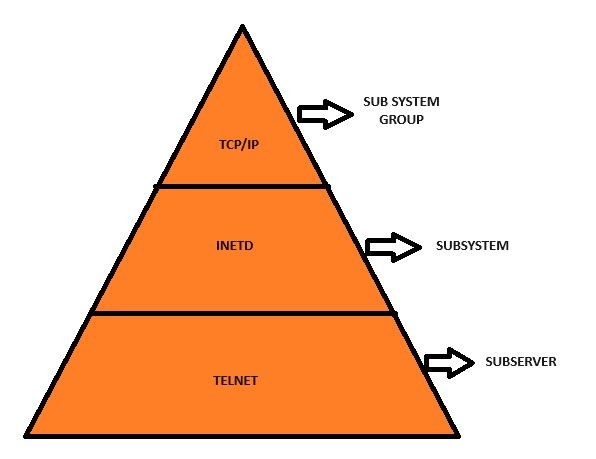For anyone working with AIX, the System Resource Controller (SRC) is an essential tool. Think of it as a facilitator that helps system admins and users to manage and oversee different processes and programs more efficiently. Let’s break this down:
What’s a Subsystem? Imagine a software module that can operate on its own or as part of a larger system. That’s a subsystem. Its primary role? To perform a specific function. Think of it as a unit of a program that does a particular job.
Features of SRC:
- It oversees related programs that come together to do a specific task.
- These programs can further be broken down into ‘subservers’, commonly known as daemons.
- The SRC manages these subsystems and their daemons, organizing them into groups for better control.
- With SRC, you can start, stop, monitor, and update these subsystems and daemons easily.
- And here’s a fun fact: When you boot up your system, SRC starts automatically. This is thanks to an entry for
/usr/bin/srcmstrdaemon in the/etc/inittabfile.
Understanding SRC’s Components:

- Subserver: These are individual programs or processes that belong to a subsystem. Examples include
sshdandftpd. - Subsystem: This is like a container that holds multiple subservers. Its job is to start, stop, and monitor them. Some examples are
gated,inetd, andnamed. - Subsystem Group: When you group multiple subsystems under one umbrella, you get a subsystem group. This makes it easy to control them all at once. For instance, groups like TCP/IP, Network Information System (NIS), and Network File Systems (NFS) are such examples.
To visualize, imagine a group called “tcp/ip”. Under it, there’s a subsystem named “inetd”. Within this subsystem, there’s a subserver or daemon known as “ftp”.
SRC Commands at a Glance:
- Operational Commands:
srcmstr: Initiates the SRC.startsrc: Fires up a subsystem, group, or subserver.stopsrc: Halts the aforementioned elements.refresh: Updates a subsystem.traceson&tracesoff: Turns tracking for a subsystem or subserver on or off.lssrc: Checks a subsystem’s status.
- Examples of Command Usage:
lssrc -a: View the status of all subsystems.startsrc -s inetd: Getinetdsubsystem running.stopsrc -g tcpip: Stop thetcpipsubsystem group.kill [PID of process]: End a process not initiated by srcmstr.
- Configuration Commands:
mkssy: Sets up a new subsystem.chssys: Modify parameters of an existing subsystem.rmssys: Deletes a subsystem.
# mkssys -p /usr/sbin/sshd \ /* Absolute path to the subsystem executable
program. */
-s sshd_adm \ /* Name that uniquely identifies the subsys. */
-u 0 \ /* User id for the subsystem. */
-a "-D -f /etc/ssh/sshd_config_adm" \ /* Arguments that must be
passed to the command. */
-e /dev/console \ /* Where the subsystem standard error data is
placed. */
-i /dev/console \ /* Where the subsys. standard input is routed. */
-o /dev/console \ /* Where the subsys. standard output is placed. */
-R \ /* Subsystem is restarted if the subsystem stops
abnormally. */
-Q \ /* Multiple instances of the subsystem are not
allowed to run at the same time. */
-S \ /* Subsystem uses the signals communication
method. */
-f 9 \ /* Signal sent to the subsystem when a forced
stop of the subsystem is requested. */
-n 15 \ /* Signal sent to the subsystem when a normal
stop of the subsystem is requested. */
-E 20 \ /* Execution priority of the subsystem. */
-G ssh \ /* Subsystem belongs to the group specified. */
-d \ /* Inactive subsystems are displayed when the
lssrc -a command request is made. */
-w 20 /* Time, in seconds, allowed to elapse between a
stop cancel (SIGTERM) signal and a subsequent
SIGKILL signal. */
Check the service's configuration:
# lssrc -S -s sshd_adm
#subsysname:synonym:cmdargs:path:uid:auditid:standin:standout:standerr:action:multi:contact:svrkey:svrmtype:\
priority:signorm:sigforce:display:waittime:grpname:
sshd_adm::-D -f /etc/ssh/sshd_config_adm:/usr/sbin/sshd:0:0:/dev/console:/dev/console:/dev/console:-R:-Q:-S:0:0:\
30:25:9:-d:20:ssh:
# odmget -q subsysname=sshd_adm SRCsubsys
SRCsubsys:
subsysname = "sshd_adm"
synonym = ""
cmdargs = "-D -f /etc/ssh/sshd_config_adm"
path = "/usr/sbin/sshd"
uid = 0
auditid = 0
standin = "/dev/console"
standout = "/dev/console"
standerr = "/dev/console"
action = 1
multi = 0
contact = 2
svrkey = 0
svrmtype = 0
priority = 20
signorm = 15
sigforce = 9
display = 1
waittime = 20
grpname = "ssh"